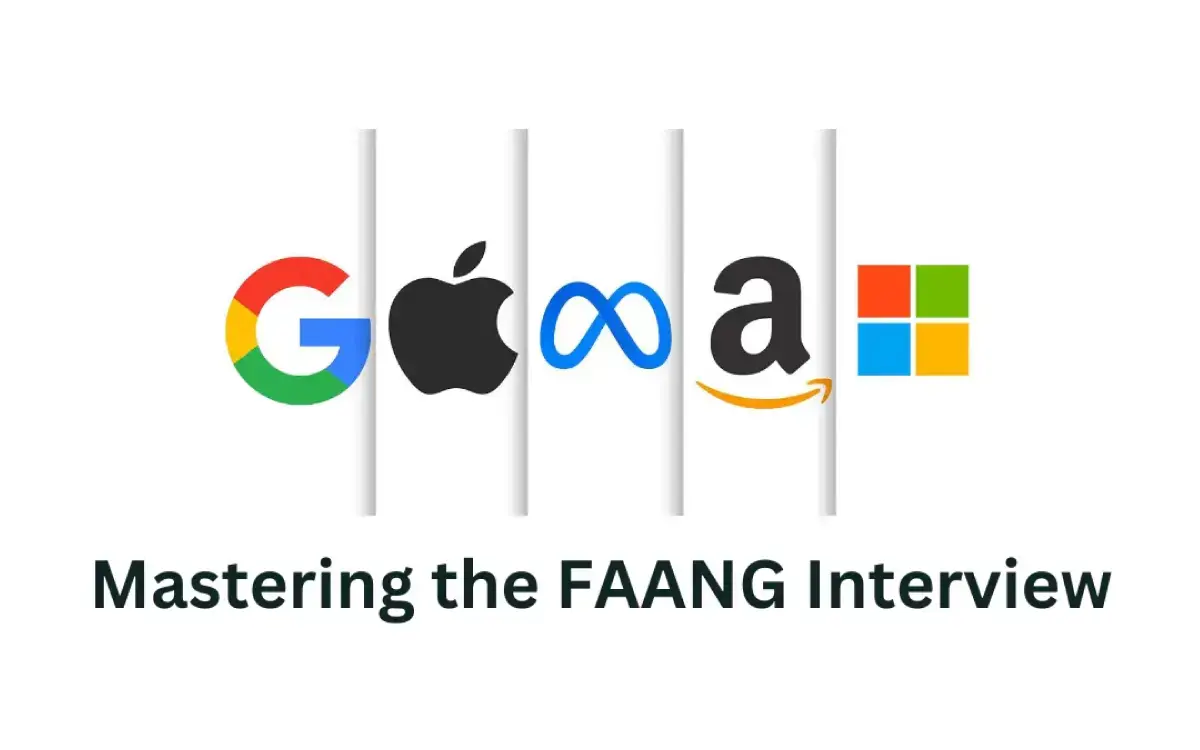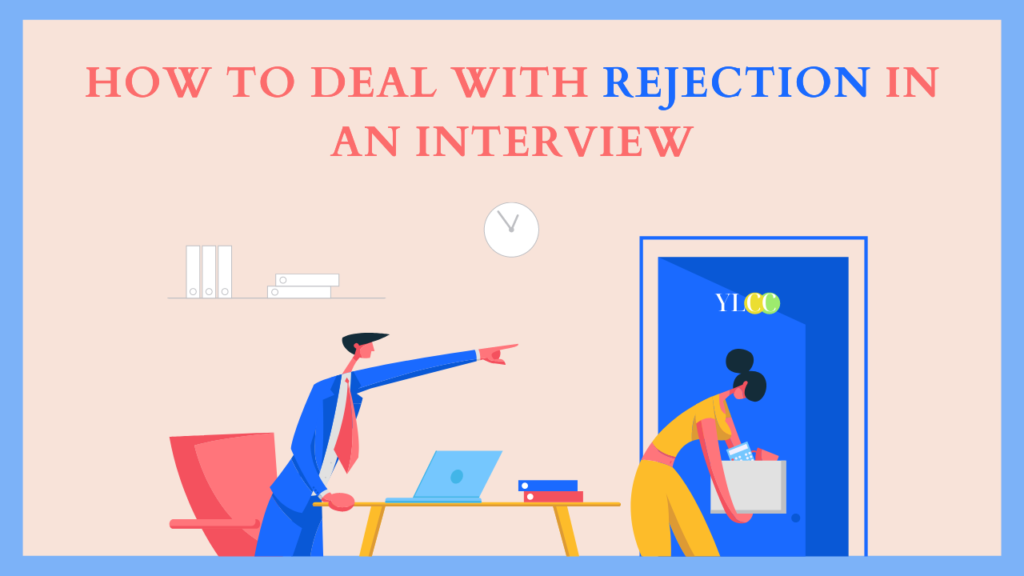1. Introduction: Why HLD Skills Make or Break Your FAANG ML Interview
If you're preparing for a machine learning interview at FAANG (Meta, Apple, Amazon, Netflix, Google), you already know this: ML High-Level Design Questions are a key part of the process, testing your ability to architect scalable, real-world ML systems.
Coding and algorithms are just the first hurdle.
The real test? Designing large-scale ML systems that handle millions of users.
At InterviewNode, we've helped hundreds of engineers crack these interviews. One pattern stands out:
"Most candidates fail ML interviews not because they don’t know models, but because they can’t design systems."
That’s where High-Level Design (HLD) comes in.
What’s Different About ML System Design?
Unlike traditional software design, ML system design questions test:
✅ End-to-end pipeline thinking (Data → Training → Serving → Monitoring)
✅ Trade-offs (Accuracy vs. latency, batch vs. real-time)
✅ Scalability (How to handle 10X more data?)
✅ Real-world constraints (Cost, regulatory compliance)
In this guide, you’ll get:
✔ Top 25 HLD questions asked at FAANG (with detailed breakdowns).
✔ Proven frameworks to structure your answers.
✔ Mistakes to avoid (from real interview postmortems).
✔ How InterviewNode’s coaching gives you an edge.
Let’s dive in!
2. What is High-Level Design (HLD) in ML Interviews?
HLD = Blueprint of an ML System
Imagine you’re asked: "Design Twitter’s trending hashtags algorithm."
A weak answer jumps straight into "Let’s use LSTMs!"A strong answer breaks it down into:
Clarify: "Is this for real-time trends or daily summaries?"
Requirements: Latency? Data size? Accuracy metrics?
Components: Data ingestion → Feature engineering → Model training → Serving → Monitoring.
Trade-offs: "Would a simpler logistic regression work instead of deep learning?"
How FAANG Evaluates Your HLD Skills
Interviewers assess:
Structured thinking – Can you break down ambiguity?
Depth vs. breadth – Do you know when to dive deep (e.g., model quantization) vs. stay high-level?
Practicality – Can your design handle 100M users?
Key Components of ML System Design
Every HLD question tests some mix of:
Data Pipeline (Storage, preprocessing, batch/streaming)
Model Training (Frameworks, distributed training, hyperparameter tuning)
Serving Infrastructure (APIs, caching, load balancing)
Monitoring & Maintenance (Data drift, model decay, A/B testing)
Up next: A step-by-step method to tackle any HLD question.
3. How to Approach HLD Questions in ML Interviews
The CLEAR Method (InterviewNode’s Framework)
| Step | Question to Ask | Example (Design Netflix Recommendations) |
| Clarify | "Is this for new users or existing?" | Scope: Cold start vs. personalized recs. |
| List Requirements | "What’s the latency budget?" | <100ms for homepage load. |
| Estimate Scale | "How many requests per day?" | 100M users, 5 recs/user. |
| Architect | Draw the system flow. | Candidate generation → Ranking → Filtering. |
| Refine | Optimize bottlenecks. | "Could we pre-compute embeddings?" |
5 Common Pitfalls (From Real Interviews)
Jumping into models too soon → First, define the problem!
Ignoring non-functional needs (e.g., "How do you handle GDPR compliance?").
No trade-off discussions → "Why X over Y?" is a FAANG favorite.
Over-engineering → Start simple, then optimize.
No failure planning → "What if the model degrades?"
Now, the main event: The Top 25 HLD Questions.
4. Top 25 HLD Questions for ML Interviews at FAANG
Category 1: Foundational ML Systems
1. Design YouTube's Video Recommendation System
Why this question matters:Interviewers want to see if you understand how to balance personalization with scalability. They're testing whether you can design systems that serve millions while keeping users engaged.
How to approach this:First, let's clarify what success looks like. Are we optimizing for watch time, clicks, or diversity? Typically, the main goal is watch time. Then we need to consider how to handle new users who don't have watch history yet.
Here's how I'd break it down:
Candidate generation: We start by narrowing down from millions of videos to hundreds. Collaborative filtering works well here because it finds videos similar to what you've watched before.
Ranking: Now we take those hundreds of candidates and predict which ones you'll watch longest. A neural network works well here because it can handle complex patterns in your watch history.
Diversity: We don't want your homepage showing ten cat videos in a row. Techniques like maximal marginal relevance help mix up the recommendations.
Key tradeoffs to discuss:
Fresh recommendations vs. system performance: We might pre-compute some candidates hourly but do final ranking in real-time
Accuracy vs. simplicity: Starting with matrix factorization might be better than jumping straight to deep learning
Pro tip from InterviewNode coaches:"Always mention cold-start solutions - like using video titles and uploader history for new videos before they have watch data."
2. Build PayPal's Fraud Detection System
Why this question matters:Fraud detection tests your ability to handle extreme class imbalance (99.9% legitimate transactions) while making real-time decisions with serious consequences.
How to approach this:First, let's understand the cost of mistakes. Is it worse to block a legitimate transaction or miss fraud? Usually, false positives hurt customer trust more.
Here's a robust approach:
Rule-based layer: Start with simple rules that catch obvious fraud ("$10K transfer from new device"). These are fast and explainable.
Lightweight model: Use logistic regression for medium-risk transactions. It's fast enough for real-time decisions.
Heavy model: For high-risk cases, run an LSTM that analyzes transaction sequences. This might take 100ms but catches sophisticated fraud.
Key considerations:
Feedback loops are crucial - when fraud slips through, use those cases to improve the models
Human review queues help for borderline cases where the system isn't confident
InterviewNode insight:"PayPal actually uses the dollar amount as one of their most important features - small test transactions often precede large fraudulent ones."
3. Design Gmail's Spam Filter
Why this question matters:This tests your ability to handle adversarial systems where spammers constantly adapt to bypass your filters.
How to approach this:First, let's clarify what we're filtering. Are we focusing on commercial spam, phishing attempts, or both? Let's start with commercial spam.
A modern spam filter has three key components:
Rule engine: Catches known patterns like "$$$" or emails from blacklisted IPs
ML model: Uses NLP to understand content. BERT works well but is expensive, so we might start with logistic regression
Feedback system: When users mark emails as spam, we use those to retrain weekly
Important nuances:
False positives are disastrous - blocking a work email is worse than missing some spam
Spammers test campaigns with small batches, so we need to detect new patterns quickly
Pro tip from InterviewNode:"Gmail's filters actually get stronger when more people mark something as spam - that's why network effects matter in anti-spam systems."
4. Design Netflix's Movie Recommendation System
Why this question matters:This evaluates your ability to solve cold-start problems while balancing business goals like subscriber retention.
How to approach this:First, let's distinguish between recommendations for new users versus existing subscribers. The strategies differ significantly.
Here's a comprehensive approach:
Cold-start handling:
For new users: Use demographic info or ask for favorite genres
For new content: Leverage metadata like actors/directors
Personalized recommendations:
Collaborative filtering finds similar users
Matrix factorization handles sparse data well
Ranking:
DNN predicts watch probability
Blend with business rules (promote Netflix Originals)
Key considerations:
The UI (especially thumbnails) impacts engagement as much as algorithms
A/B testing is crucial - Netflix runs hundreds of tests simultaneously
InterviewNode insight:"Netflix found that their recommendation system saves them $1B annually by reducing churn - always tie your design to business impact."
5. Design Spotify's Music Recommendation
Why this question matters:This tests your understanding of sequential patterns and multi-modal data (audio + behavior).
How to approach this:First, clarify whether we're optimizing playlists, radio stations, or discovery features. Let's focus on personalized playlists.
A robust music recommender has three layers:
Audio analysis: CNNs extract musical features (tempo, key, energy)
Behavioral modeling: RNNs capture listening sequences (workout → cooldown)
Context integration: Time of day, device, and activity matter
Key nuances:
People enjoy variety but within coherent "mood" clusters
The same song might fit both "focus" and "sleep" playlists depending on context
Pro tip from InterviewNode:"Spotify's 'Discover Weekly' works so well because it combines collaborative filtering with audio analysis - mention this hybrid approach."
Category 2: Scalability & Distributed ML
6. Design Distributed Training for a Billion-Parameter Model
Why this question matters:FAANG needs engineers who can work with models too large for single machines.
How to approach this:First, clarify if this is for dense (LLMs) or sparse (recommendation) models.
For large language models:
Data parallelism: Split batches across GPUs, sync gradients
Model parallelism: Split layers vertically when they don't fit
Pipeline parallelism: Split layer computations horizontally
Key challenges:
Gradient synchronization overhead
Fault tolerance across hundreds of devices
Debugging distributed training is complex
InterviewNode example:"Google's PaLM uses a technique called 'pipedream' where they overlap computation and communication to reduce idle time."
7. Handle 1M ML Predictions per Second
Why this question matters:Tests your ability to optimize low-latency, high-throughput systems.
How to approach this:First, understand latency requirements. Is 50ms acceptable?
Key strategies:
Batching: Group requests but watch tail latency
Model optimization: Quantization, pruning
Hardware: GPUs with TensorRT, efficient load balancing
Tradeoffs:
Throughput vs latency
Accuracy vs compute cost
Pro tip:"Twitter achieves this using model sharding - different servers handle different parts of the model."
Category 3: Real-time Systems
8. Design Twitter's Trending Hashtags System
Why this question matters:This tests your ability to design real-time analytics systems that handle massive data streams while detecting meaningful trends (not just spikes from bots). Interviewers want to see you balance freshness, accuracy, and anti-gaming measures.
How to approach this:First, let’s clarify the requirements:
"Are we tracking global trends or personalized trends?" (Usually global)
"How quickly should trends update?" (Every 5-15 minutes)
"How do we prevent spammy hashtags from trending?" (Critical for Twitter)
Here’s how I’d architect it:
Step 1: Data Ingestion
Twitter’s firehose is ~500M tweets/day. We need to:
Filter tweets (remove bots, spam) using lightweight ML models
Extract hashtags and normalize them (e.g., #ML == #MachineLearning)
Track metadata: Tweet volume, user diversity, recency
Step 2: Trend Detection
Sliding windows:
5-minute windows for freshness
Compare current activity to baseline (e.g., +500% tweets = potential trend)
Scoring:
Weight tweets by user credibility (verified users matter more)
Penalize hashtags with low user diversity (avoids bot attacks)
Step 3: Anti-Gaming
Trends are gamed constantly. We need:
Rate limits: Max 3 trending hashtags/hour per account
Bot detection:
Check for repetitive posting patterns
Downweight new accounts
Manual review: Queue borderline trends for human moderators
Key Tradeoffs
Latency vs. accuracy: Faster updates mean more noise
Global vs. local: Should #StormInChicago trend globally? Probably not.
Transparency: Twitter explains trends with representative tweets
Pro Tip from InterviewNode:"Twitter once had a trend hijacked by bots posting #JustinBieberNEVER—mention how you’d detect coordinated attacks in real-time."
9. Design Facebook's Ad Click Prediction
Why this question matters:Ad systems are the lifeblood of social media companies. Interviewers want to see you understand both the ML and business aspects of this critical system.
How to approach this:First, let's clarify the scope. Are we predicting clicks for newsfeed ads, stories, or search ads? Let's focus on newsfeed ads.
Here's how I'd architect this:
Feature engineering:
User features: Past ad engagement, demographic info
Ad features: Creative type, offer details
Context features: Time of day, device type
Model selection:
Start with logistic regression for interpretability
Move to gradient boosted trees for better performance
Consider deep learning if we have enough data
Online learning:
Update model weights continuously as new clicks come in
Handle concept drift as user preferences change
Key considerations:
Cold start problem for new ads/new users
Fairness considerations to avoid discriminatory targeting
Explainability requirements for advertiser trust
Pro tip from InterviewNode:"Facebook found that simple feature crosses (user_age × ad_category) often outperform complex neural networks for this task - start simple!"
10. Design Google's Search Autocomplete
Why this question matters:This tests your ability to design low-latency systems that handle massive query volumes while being personalized.
How to approach this:First, let's clarify our priorities. Is it more important to be fast or highly personalized? For Google, both matter, but speed is critical.
Here's a robust approach:
Prefix matching:
Build a trie (prefix tree) of common queries
Support typo tolerance with edit distance
Personalization:
Store recent queries per user (last 24 hours)
Blend personalized suggestions with popular ones
Freshness:
Detect trending queries in real-time
Invalidate cache when new trends emerge
Key challenges:
Handling 100,000+ queries per second
Multilingual support
Avoiding inappropriate suggestions
InterviewNode insight:"Google's autocomplete actually uses different models for different languages - what works for English queries doesn't necessarily work for Japanese."
Category 4: Edge Cases & Optimization
11. Handle Data Drift in Production
Why this question matters:Models degrade silently in production. Interviewers want to see you think beyond training and consider the full lifecycle.
How to approach this:First, let's understand what kind of drift we're monitoring:
Feature drift: Input distribution changes
Concept drift: Relationship between features and target changes
Label drift: Definition of labels changes
Here's a comprehensive monitoring system:
Statistical tests:
Kolmogorov-Smirnov test for feature drift
Monitor prediction distributions
Automated alerts:
Set thresholds for key metrics
Escalate to engineers when breached
Mitigation strategies:
Automated retraining pipelines
Model rollback capabilities
Key considerations:
Don't over-alert - focus on business-impacting drift
Maintain data lineage to debug drift causes
Consider segment-wise monitoring (different drift across user groups)
Pro tip from InterviewNode:"At Amazon, they found product recommendation models can degrade by 20% accuracy in just two weeks during holiday seasons - monitoring frequency matters!"
12. Design A/B Testing Framework for ML Models
Why this question matters:FAANG companies run hundreds of experiments simultaneously. They need engineers who understand proper experimental design.
How to approach this:First, let's clarify our goals. Are we testing a new ranking algorithm? A new UI with the same model?
Here's a robust framework:
Experiment design:
Clearly define success metrics (primary and guardrail)
Calculate required sample size
Randomization:
Consistent hashing for user assignment
Stratified sampling for important segments
Analysis:
CUPED for variance reduction
Sequential testing for early stopping
Key pitfalls to avoid:
Sample ratio mismatch
Interference between experiments
Peeking at results prematurely
InterviewNode example:"Netflix found they needed at least 2 weeks of A/B testing to account for weekly usage patterns - shorter tests gave misleading results."
13. Optimize Model for Edge Devices
Why this question matters:With ML moving to phones and IoT devices, interviewers want to see you can work under tight constraints.
How to approach this:First, let's understand our constraints. What's our latency budget? Power limits? Memory limits?
Here's a comprehensive optimization strategy:
Model architecture:
Choose mobile-friendly architectures (MobileNet)
Neural architecture search for custom designs
Quantization:
Float32 → Int8 conversion
QAT (Quantization Aware Training)
Compiler optimizations:
TVM for hardware-specific compilation
Operator fusion to reduce overhead
Key tradeoffs:
1% accuracy drop might be worth 2x speedup
Different devices need different optimizations
Pro tip from InterviewNode:"Apple's Neural Engine uses 8-bit quantization by default - mentioning hardware-specific optimizations shows depth."
Category 5: Industry-Specific Problems
14. Design Tesla's Autopilot Vision System
Why this question matters:This tests your ability to design safety-critical real-time systems with multiple sensors.
How to approach this:First, let's clarify the sensor suite. Tesla uses 8 cameras, but no LIDAR.
Here's how to architect this:
Per-camera processing:
Object detection per camera
Lane detection
Sensor fusion:
3D reconstruction from multiple cameras
Temporal fusion across frames
Safety systems:
Redundant calculations
Confidence thresholding
Key considerations:
Processing must happen in <100ms
Failure modes must be graceful
Continuous learning from fleet data
InterviewNode insight:"Tesla's 'HydraNet' processes all camera feeds through a single neural network with shared features - this reduces compute requirements significantly."
15. Design ChatGPT's Response Ranking
Why this question matters:LLMs are increasingly important, and interviewers want to see you understand their unique challenges.
How to approach this:First, let's clarify our goals. Are we ranking for helpfulness, safety, or engagement?
Here's a modern approach:
Candidate generation:
LLM generates multiple completions
Safety filtering:
Toxicity classification
Fact-checking against knowledge graph
Ranking:
RLHF-trained reward model
Business rules (e.g., prefer shorter answers)
Key challenges:
Latency constraints
Avoiding harmful content
Maintaining coherent personality
Pro tip from InterviewNode:"OpenAI found that their reward models needed separate training for different languages - a one-size-fits-all approach didn't work globally."
16. Design LinkedIn's "People You May Know"
Why this question matters:This tests your graph algorithm knowledge and ability to balance social relevance with growth goals.
How to approach this:First, clarify whether we're optimizing for connection quality or platform growth. LinkedIn likely cares about both.
Here's my approach:
Graph construction:
Nodes: Users and companies/schools
Edges: Connections, shared experiences
Candidate generation:
2nd-degree connections (friends-of-friends)
Shared workplaces/schools
Similar industries
Ranking:
Weight shared connections heavily
Boost recent coworkers/classmates
Downweight spammy connectors
Key nuance:"Linkeddin found that showing 3-5 shared connections increases acceptance rates by 40% compared to just 1 - social proof matters."
17. Design Zillow's Home Price Prediction (Zestimate)
Why this question matters:Tests your ability to combine structured data with spatial relationships.
How to approach this:First, understand what's unique about homes vs. other products:
Features:
Home specs (sqft, bedrooms)
Neighborhood trends
School districts
Spatial modeling:
Nearby home sales
Geographic price gradients
Uncertainty:
Provide confidence intervals
Explain key price drivers
Pro tip:"Zillow uses ensemble models where geographic hierarchies (block/neighborhood/city) get different weights by region."
18. Design TikTok's "For You" Feed
Why this question matters:Evaluates your understanding of engagement optimization and virality.
How to architect this:
Candidate selection:
Content from followed accounts
Viral content from similar users
Fresh content from new creators
Ranking:
Predict watch time probability
Boost content with high engagement velocity
Diversity:
Avoid over-recommending one creator
Blend content types (videos, stitches, etc.)
Key insight:"TikTok's algorithm tests new videos with small, targeted audiences before broader distribution - mention this 'cold-start' strategy."
Category 6: Advanced Optimization
19. Reduce LLM Inference Costs by 50%
Why this matters:With ChatGPT costing millions to run, cost optimization is crucial.
Solutions:
Quantization:
FP32 → INT8 (2-4x savings)
Sparse quantization for attention layers
Distillation:
Train smaller student models
Layer dropout during training
System tricks:
Dynamic batching
Continuous batching for variable-length inputs
Tradeoff:"Google found that 8-bit quantization of LLMs typically costs <1% accuracy for 3x speedup - almost always worth it."
20. Design Multi-Modal Search (Text + Image)
Why asked:Tests your ability to connect different data modalities.
Approach:
Embedding spaces:
CLIP-style joint embedding
Cross-modal attention
Indexing:
FAISS for approximate nearest neighbors
Hybrid text/image queries
Ranking:
Blend text and image similarity
Downweight off-topic results
Example:"Pinterest uses multi-modal search where sketching on images modifies the text query - mention real hybrid use cases."
Category 7: Emerging Challenges
21. Detect Deepfake Videos
Why this matters:Tests adversarial ML and forensic analysis skills.
Solution:
Artifact detection:
Unnatural eye blinking
Inconsistent lighting
Temporal analysis:
Frame-to-frame inconsistencies
Heartbeat detection
Provenance:
Cryptographic signatures
Watermarking
Key point:"Deepfake detectors must evolve continuously - mention the cat-and-mouse nature of this problem."
22. Design Ethical AI Safeguards
Why asked:FAANG cares increasingly about responsible AI.
Framework:
Bias testing:
Segment performance by demographics
Adversarial debiasing
Safety layers:
Content moderation hooks
Human review queues
Transparency:
Explainable predictions
Audit trails
Pro tip:"Always mention tradeoffs between fairness and accuracy - perfect fairness usually requires some performance sacrifice."
23. Build ML Platform for 1000 Engineers
Why matters:Tests your system design at organizational scale.
Components:
Feature store:
Uber's Michelangelo-style
Versioned features
Training:
Reproducible pipelines
Automated hyperparameter tuning
Monitoring:
Drift detection
Performance dashboards
Key insight:"Meta found that standardizing on PyTorch and FBLearner reduced onboarding time from 6 weeks to 3 days - standardization matters."
Category 8: Research Frontiers
24. Design Self-Learning Recommendation System
Why cutting-edge:Tests your grasp of meta-learning.
Approach:
Memory-augmented:
Store user patterns in external memory
Few-shot learning:
Adapt quickly to new user behavior
Automated feature engineering:
Neural architecture search
Automated feature crosses
Example:"Google's latest recsys papers show that letting models dynamically adjust their own architectures improves long-term engagement."
25. Build Quantum ML Prototype
Why futuristic:Tests your ability to think beyond classical ML.
Practical approach:
Hybrid model:
Quantum feature embedding
Classical neural network
Use cases:
Molecular property prediction
Portfolio optimization
Constraints:
Noise resilience
Qubit limitations
Reality check:"Current quantum ML works best for problems with native quantum representations - don't oversell general applicability."
Final Tips
Always tie to business impact:"This design could improve retention by X% by solving Y problem"
Compare alternatives:"We could use X for better accuracy or Y for lower latency"
Ask clarifying questions:"Are we optimizing for user experience or revenue here?"






